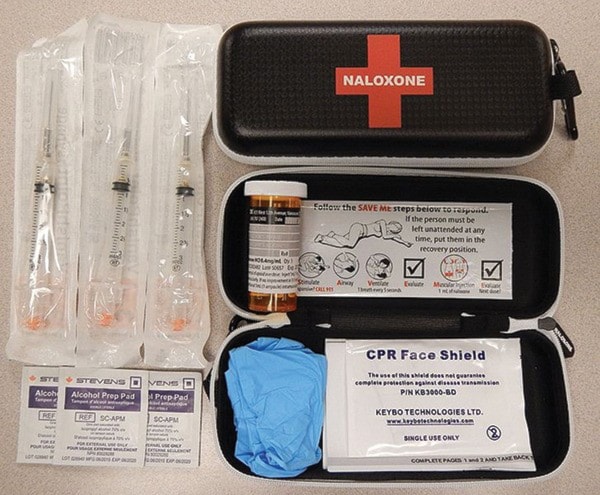Physicians and first responders in Princeton are dealing with increased incidents involving drugs, according to Dr. Trevor Corneil, chief medical health officer for Interior Health.
In an interview with The Spotlight Corneil said the “surge” in drug related 911 calls and emergency room visits began last fall and is consistent throughout the South Okanagan.
Specific numbers are not presently available, and Corneil could not comment on the two deaths from fentanyl in Princeton reported last month by RCMP.
“Those haven’t reached us. I can’t confirm because the coroner is working those through.”
Also, he said, recent files are not reportable in any community if there are less than five cases, in order to protect patient confidentiality in small regions.
“If you look back [in Princeton] there was an overdose death in 2015, and two in 2013. Historically those are available…So what that tells us is there is a baseline problem that has been occurring across the province.”
It is estimated there are between 3,500 to 4,000 active drug users in the Interior Health catchment, said Corneil. That equals between .5 and one person on drugs, out of every hundred.
“We didn’t actually feel the impact of fentanyl until November or December [2016] and that’s when we started to see increased visits to the emergency room or calls to EMS about overdose events,” said Corneil. “These drugs are everywhere, big cities, small cities and towns.”
In October, and as part of Interior Health’s response to what the province has declared a state of health emergency, all hospitals and health centers were stocked with take-home Naxoline kits, which provide the means to reverse the effects of an opioid overdose.
Since August 2016 the local hospital has distributed 22 take home Naxoline kits.
“Everyone should have a Naxoline kit if they are a drug user, if they are a casual or regular user,” said Corneil.
“Certainly at the Princeton Health Centre there are public health nurses who are available and who will distribute a kit to people who are at risk, or live with people who are at risk,” he said. “There is some training involved in that because there is a procedure that is good to follow.”
To date most hospitals and health centers have been reaching out to patients or clients that may need the take home kits, but anyone call the hospital and ask about the program.
There should be “no barriers” to any resident wanting a kit, he added.
“One of the biggest barriers for people who use drugs and accessing services is the stigma associated with it. We know that people who are regular users do not want to be using they want to access treatment…Harm reduction and overdose prevention is all about engaging with people and developing health care relationships, and offering at different times and opportunities access to treatment or a change in their behavior.”
It is both a compassionate and practical approach, he added.
“People who use substances do very well once they engage in treatment and the majority go on to lead much healthier lives, and often very functional lives. Down the road, if we engaged them in that moment, they actually cost us lots less from a health care economics perspective than they do when we are trying to deal with illness related to their drug use.”
